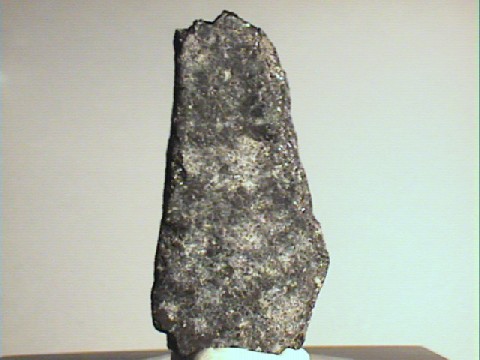 THE MINERAL CHROMITE
THE MINERAL CHROMITE
- Chemical Formula: FeCr2O4, Iron Chromium Oxide.
- Class: Oxides and Hydroxides
- Group: Spinel
- Uses: The principle ore of chromium, as a refractory component, as a dye and as mineral specimens.
Specimens
Chromite forms in deep ultra-mafic magmas and is one of the first minerals to crystallize. It is because of this fact that chromite is found in some concentrated ore bodies. While the magma is slowly cooling inside the Earth's crust, chromite crsytals are forming and because of their density, fall to the bottom and are concentrated there.
Although its primary origin is ultra-mafic rocks such as peridotites, chromite is also found in metamorphic rocks such as serpentites. Chromite, as is indicated by its early crystallization is resistant to the altering affects of high temperatures and pressures. Thus it is capable of going through the metamorphic processes unscathed, while other minerals around it are being altered to serpentine, biotite and garnets. This characteristic also explains chromites use as a refractory component in the bricks and linings of blast furnaces.
Usually magnesium is present in chromite substituting for the iron and in fact a solid solution series exists between chromite and the much rarer mineral magnesiochromite. All chromite specimens in nature contain some magnesium, likewise all natural magnesiochromites contain some iron. Magnesiochromite is grayer in color and in streak and has a slightly lower density than chromite at a specific gravity of 4.2 to 4.4.
PHYSICAL CHARACTERISTICS:
- Color is brownish black to a deep dark black.
- Luster is metallic to greasy.
- Transparency: Crystals are opaque.
- Crystal System is isometric; 4/m bar 3 2/m
- Crystal Habits include octahedrons often with dodecahedral faces modifing the edges of the octahedron to the point of rounding the crystal. Well formed crystals are rare and chromite is usually found massive or granular.
- Cleavage is absent.
- Fracture is conchoidal.
- Hardness is 5.5
- Specific Gravity is 4.5 - 4.8 (average for metallic minerals)
- Streak is brown.
- Other characteristics: Weakly magnetic and an octahedral parting is sometimes seen.
- Associated Minerals include olivine, talc, serpentine, uvarovite, pyroxenes, biotite, magnetite and anorthite.
- Notable Occurrences include several mines in North Carolina, Montana, Maryland, Oregon, Texas, California and Wyoming, USA also found in Turkey; South Africa; Philippines and Russia.
- Best Field Indicators are crystal habit, streak, associations with ultra-basic minerals and parting.


